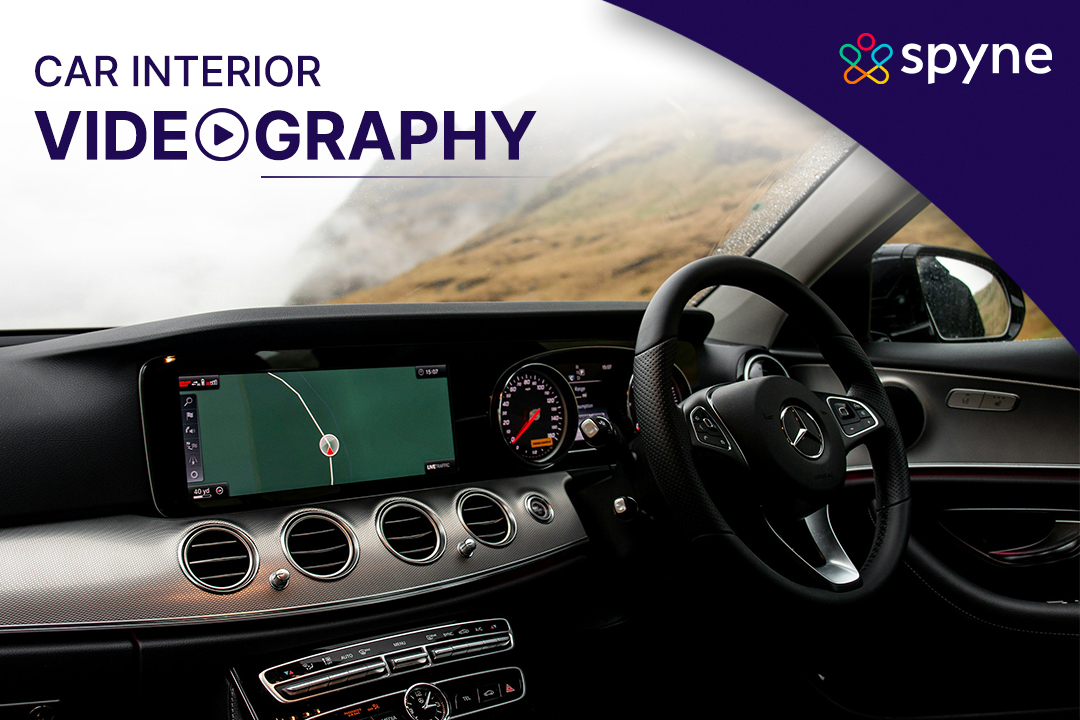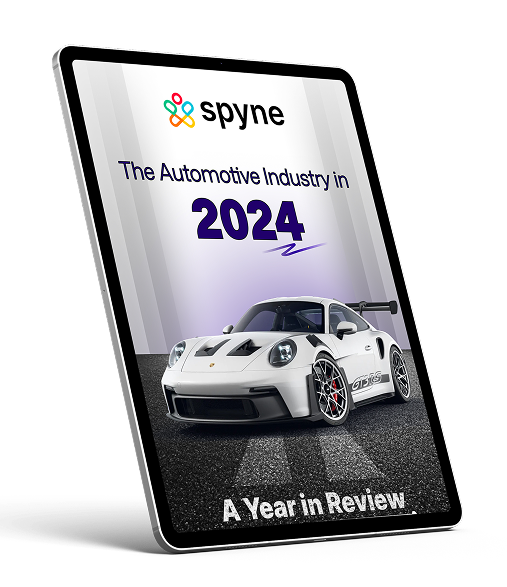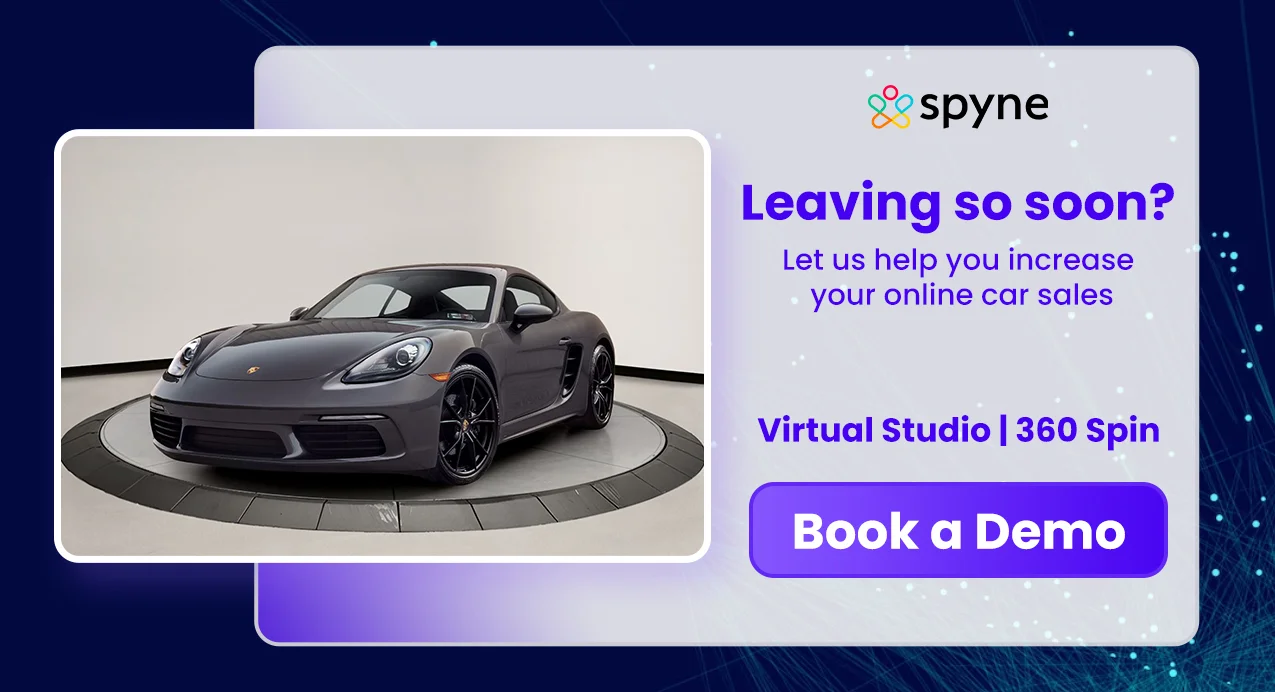When buying a car, visuals matter—especially video. High-quality shots of both the exterior and interior help attract buyers and increase sales. Details like the dashboard, seats, and steering wheel, body, headlights etc. are key touchpoints, so capturing them through effective videography is essential. However, car interior videography is not just about hitting “record”, different aspects like lighting, angles, and smooth transitions make all the difference. With 63% of car buyers influenced by visuals, a well-crafted video of the car’s interior can make or break a sale.
Ready to elevate your videography game? Here’s a complete guide to capturing pro-level interior car videos.
What Is Car Interior Videography?
Car interior videography is the act of capturing the essential details inside a vehicle, such as the seats, dashboard, steering wheel, center console, and more. Showcasing the car’s interior is crucial because it’s where buyers will spend most of their time, and its condition can strongly impact their buying decision. While minor exterior blemishes might be forgiven, poor-quality or damaged interiors can completely turn a buyer away. Interior photography needs more skill because it’s usually dark inside the car, making clicking studio-like effects difficult to achieve. Hence, there are many aspects that dealerships need to consider while filming their feet interiors, like lighting, color, reflections, and more.
Essential Gear for Car Interior Videography
In 2025, interior car videography is no longer just about showcasing a dashboard or seat. With buyers increasingly influenced by visual storytelling, dealerships and content creators are now investing in high-quality automotive videography gear to create immersive and detailed content. Whether you’re an auto dealer or a professional car videographer, having the right tools can dramatically elevate your production quality and sales impact. Here’s a breakdown of must-have equipment for next-gen car dealer video solutions:
Best Camera for Car Videography
A mirrorless camera with excellent low-light performance is now the gold standard for car interior videography. Models like the Sony A7S III or Canon EOS R6 are preferred by professional car videographers for their dynamic range, fast autofocus, and compact build—perfect for tight car cabins. While DSLRs are still reliable, mirrorless options offer better portability and video-centric features.
Wide-Angle Lens (16–35mm)
A wide-angle lens ensures you can capture the entire cabin—from the infotainment system to the seat stitching. It’s essential for creating immersive automotive videography content and avoiding tunnel-vision effects. Look for lenses with minimal distortion for a natural, cinematic perspective.
Gimbal or Stabilizer
Shaky footage can ruin even the best shot. A 3-axis gimbal stabilizer (like DJI Ronin or Zhiyun Weebill) enables smooth pans and tracking shots inside the car, adding a professional touch to your vehicle videography.
Automotive Videography Lighting Kit
Proper automotive videography lighting is crucial for shooting inside dim or shadow-heavy interiors. Use portable bi-color LED panels or ring lights to brighten dashboards, footwells, and backseats evenly—without glare or harsh shadows. Adjustable lighting enhances surface textures and material contrast, which is key in interior videography.
Lavalier or Shotgun Microphone
Sound matters in auto dealer videography, especially for video walkaround or voiceover. Invest in a directional shotgun mic or clip-on lav mic to isolate audio from outside noise and capture crisp in-car sounds (like engine startups or infotainment feedback).
Adjustable Tripod
In tight car spaces, an adjustable or flexible tripod helps maintain perfect framing. Mini-tripods or GorillaPods are ideal for dashboard shots or cabin-wide perspectives. These are especially helpful for static detail shots or POV angles.
Suction Mounts for Dynamic Shots
Want to shoot while driving or simulate a ride-along experience? A sturdy suction mount allows your camera or phone to attach to windshields, side windows, or dashboards for cinematic motion footage—a trending approach in car videography techniques.
You can also start using a high-end smartphone camera with cinematic mode and attachable wide lenses. When paired with editing tools and stabilizers, smartphones can be surprisingly powerful for basic interior car videography.
Pro Tips for Capturing High-Impact Car Interior Videos
Now that the equipment part is sorted, you can start taking pictures of the car’s interior. But don’t just jump the camera trigger and get on with it because here are some techniques you should know to enhance your car interior videography:
Pre-Production Planning
Before any kind of shoot, there should be a certain amount of planning that needs to be done. It includes things you want to capture, features, areas etc. It’s always helpful to build a storyboard beforehand to determine the flow of your shoot.
Use Natural Light
Flash though used consistently is not required on certain occasions. Your natural light is the ultimate illuminator for your interior. It’s always advised to take your pictures during the golden hour—early morning or late afternoon. This creates a warm, inviting atmosphere inside the car, enhancing the visual appeal.
Create Depth with Layers
Always use the car foreground elements, like as a passenger’s arm or an accessory, to create depth in your shots. This technique helps buyers gain a better immersive experience.
Experiment with Reflections
Reflections are considered negative for most parts, but it also be used during interior photography. Reflection through mirrors or reflections when used tastefully can make the videos/pictures more aesthetic and pleasing to the buyer.
Dynamic Movement
Moving your camera smoothly along with your interior to take the cider shots is a good way to be creative. While it can be tricky for amateurs, this technique adds energy and engages viewers, simulating the experience of riding in the car.
Use Sound Design
Sound engineers can help identify sounds like clicks, the sound of an engine, etc. that are pleasing to the buyers. These sounds can be added to vehicle videos to make the video stand out and get the viewers hooked.
With these techniques, you can create captivating car interior videos that effectively showcase the vehicle’s features and ambiance.
Editing Car Interior Videos
After you are done with the raw shoot, capturing a car’s interiors from different angles you now need to focus on car video editing. It’s only in the editing phase that the pictures and videos from your shoot will make sense. Without proper editing, they are just random clips with no meaning, story, or buying appeal. While a professional video editor can help you out, a lot of times, there are gaps between your vision and their understanding of your vision. Fortunately, many automated car videography tools like Spyne make both the shoot and editing part for dealerships easier to perform so that they can perform these tasks on their own.
Creative Ideas for Car Interior Videos That Resonate with Buyers
Capturing a great-looking cabin isn’t enough anymore. Today’s audiences crave experiences, not just aesthetics. With attention spans shrinking and competition soaring, your car interior videography must not only showcase features but tell a story. Whether you’re a car videographer working for a dealership or creating content for social media, these ideas will help you stand out and connect with buyers on a deeper level:
First-Person POV Shots
Use interior videography from a first-person perspective—as if the viewer is the driver. Show them gripping the wheel, tapping the touchscreen, or adjusting the AC vents. This immersive technique allows potential buyers to visualize themselves in the car, turning interest into intent.
Mood-Based Dynamic Lighting
Experiment with lighting setups that match different buyer personas. Morning light can make the car feel fresh and welcoming, while night shots can highlight ambient lighting, dashboard glow, and tech features. Use automotive videography lighting to bring out specific textures like leather, wood trims, or metallic finishes.
Detail-Driven Close-Ups
Good vehicle videography doesn’t overlook the small stuff. Zoom in on things like hand-stitched seat patterns, gear knob textures, touchscreen animations, and door handle finishes. These micro-details elevate the luxury feel and demonstrate build quality—key factors for premium buyers.
Lifestyle Storytelling with Props
Use subtle props and human elements to create relatable narratives. Think: a coffee cup in the holder, groceries in the trunk, or a child’s toy on the back seat. These everyday touches help transform your video from a sales pitch to a lifestyle moment—and that’s what resonates in today’s content-first world.
Multicam Transitions & Motion Shots
Don’t be afraid to mix up your angles. Combine gimbal-stabilized walkthroughs, static tripod shots, and wide-angle transitions for a polished, cinematic feel. A sweeping motion from the driver’s seat to the backseat using a gimbal is a great car videography technique that adds visual flow and energy.
Showcase Tech in Action
Don’t just show the screen—interact with it. Tap through infotainment options, pair a phone with Bluetooth, or open the panoramic sunroof mid-shot. These real-use scenarios help buyers understand how tech integrates into daily drives—something static photos can’t capture.
Highlight Car Personality
Every car has a vibe—some scream adventure, others whisper luxury. Let your automotive videography reflect that. Use the right music, props, lighting, and transitions to match the vehicle’s character. For a rugged SUV, use earthy tones and b-rolls of dirt on the mat; for an electric hatchback, opt for clean, modern transitions and upbeat music.
Combine interior shots with exterior snippets or 360-degree spins to offer a full visual journey. With tools like Spyne AI or similar apps, even dealerships without production teams can achieve studio-grade car dealer videography results.
Overcoming Challenges in Car Interior Videography
Car interior videography is not easy. It presents multiple challenges, especially when it comes to manoeuvring cameras in tight spaces and complex lighting conditions. Limited spacing restricts the cameraman’s ability to move and try different angles. Using wide-angle lenses can help, but they risk distorting the interior. Light is another major challenge because car interiors often lack sufficient natural light. Hence, there is always a need for artificial lighting and the need to manage shadows as well, which can be tricky.
Unnecessary reflections are another issue that can disrupt many shots. Reflections from shiny surfaces, windows, and chrome elements often make taking videos difficult. It’s always advised to use polarising shots to reduce these unwanted reflections.
Finally, getting the right focus in a closed space like a car interior is also very difficult, especially when you want to capture multiple elements. There’s also the challenge of maintaining the appropriate depth of field, especially when you want to focus on multiple elements at once. Adjusting the depth of field with manual settings is key. Additionally capturing clear audio is also very crucial for a video. Audio inside a car can be a little tricky to capture due to external noises and limited microphone placement. Here, using high-quality mics can isolate sound and improve audio clarity.
Interior Videos as the Ultimate Automotive Video Marketing Tool
If you are someone intimidated by the thought of taking videos, lights, editing etc. then we have something perfect for you. By leveraging the help of state-of-the-art, in-built, and zero-effort AI automotive video marketing capabilities like Spyne, you can create high-quality studio-like car interior images and videos. With Spyne you get:
1) Accurate light and brightness along with an on-screen guide.
2) An overlay sketch that helps you capture all relevant details from an accurate distance.
3) A whopping 100+ background options for your car images.
4) Ability to build customised backgrounds with one tap.
5) Saved time and costs involved in editing costs through automated editing, processing hundreds of images at one go!
6) Well, all of this is not just for the interior, you can shoot high-quality car exterior videos as well, along with a complete 360-degree spin view.
Conclusion
While car exteriors might garner more eyeballs on the web, car interior is an integral part that cannot be overlooked. It is something that can make or break a deal. The above guide along with an AI-based tool like Sypne AI app will help you become perfect with car interior videography and click high-quality and lead-converting car inside images and win more hearts.


























